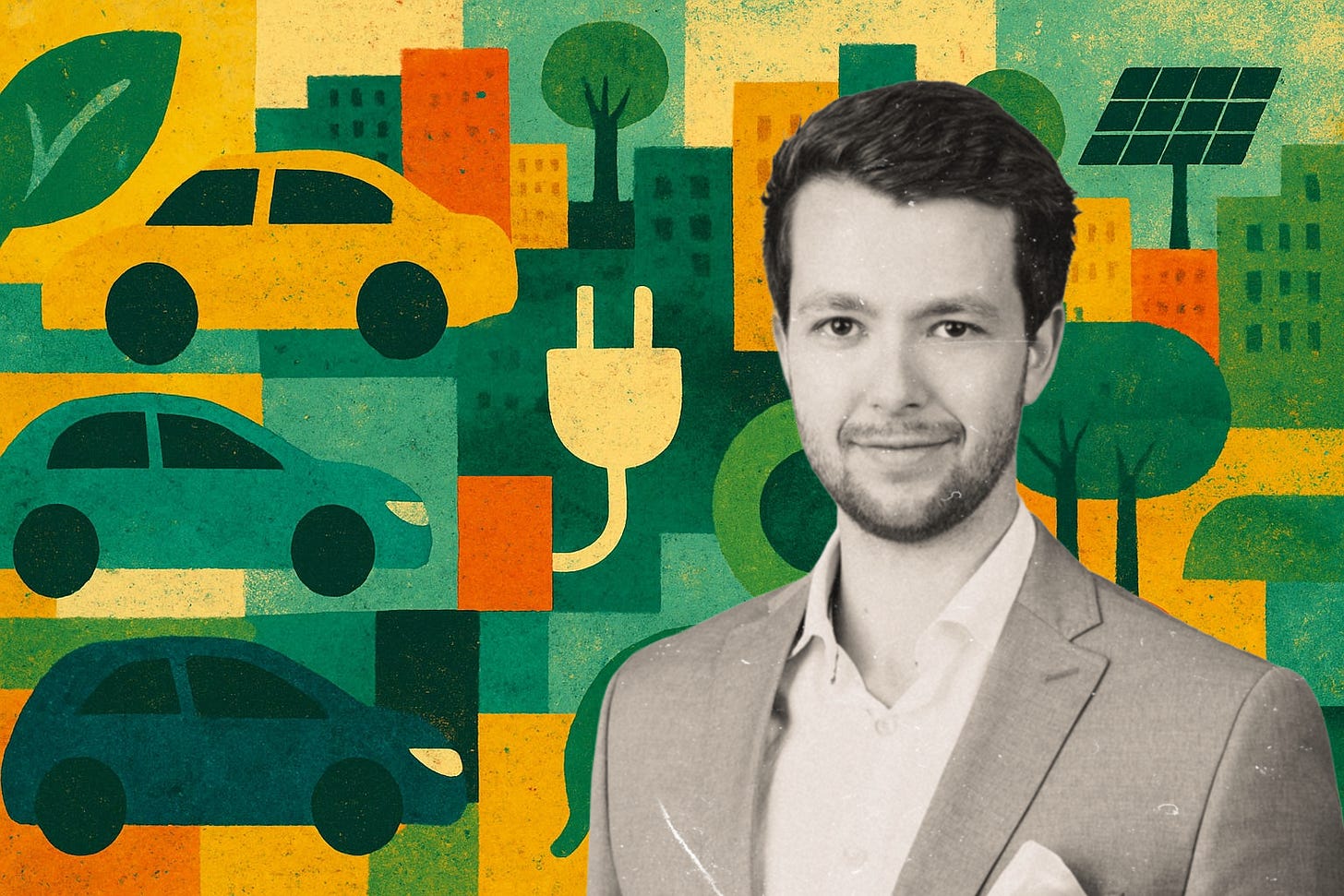🚗 What it takes to build sustainable urban transport: My interview with Jonas Junk
Hey folks! When I asked Jonas Junk of Oliver Wyman how to future-proof urban mobility, he didn’t mention apps or flying cars. He talked about parking tariffs, local control, and why EV subsidies that come and go are worse than none at all.
Are there any cities you’d highlight as leading examples in sustainable transport planning?
In my view, Northern Europe has strong examples — Amsterdam, the Nordics, parts of the Baltics. You see policies like no-ICE (internal combustion engine) zones, parking tariffs, widespread public charging, big public transport systems, and pedestrian- and cycling-friendly design.
These places combine public investment and infrastructure with incentives — subsidies for individuals, for instance — and clearly communicate the benefits from a social, economic, and environmental perspective. That’s where it often succeeds or fails.
Many countries fall short because there’s no follow-through: EV subsidies are introduced, then withdrawn, then reintroduced after demand crashes. That kind of uncertainty hinders sustainable transport planning.
Urban transport is local by nature, but cities exist in a global environment. How can local governments succeed with so much international pressure?
Local entities need to decide how to deploy money most effectively. Say the federal government in Germany commits 100 billion euros to sustainability, and it’s divided by the population. Local governments should decide how best to use their share.
National leaders can’t know exactly where to place chargers in Frankfurt. That requires local knowledge. In smaller Middle Eastern countries, it’s a bit different — Qatar can plan mostly centrally for Doha — but even in Saudi Arabia, local implementation is essential, even if budget allocation happens centrally.
What about the economic benefits of investing in sustainable transport? How does it affect local economies?
There are direct effects: new market entrants, new jobs — drivers, mechanics, technicians. Then there are indirect effects. For example, if you put a charger in a mall or a cinema, people spend more time and money there. Infrastructure investment also supports local contractors — say, if a city subsidises solar panels, more money flows to builders and electricians.
There’s also a broader ecosystem: solar panels, wallboxes, grid operators, and material production. Some of that’s national, but it still boosts economic activity. And socially, many jobs don’t require a degree, so they benefit workers with less academic training.
Then there’s the long-term impact. We found that in 2023, air pollution cost London almost $6 billion, Berlin $3 billion. These are real costs — even if they’re hard to measure or attribute to one decision. You won’t say in ten years, “we saved X amount of dollars by switching to EVs,” but the savings are real.
Read the full interview in Urbi Atlas, and check out my feature on the future of mobility.
And that’s it for today! Thanks for reading! If you enjoy the newsletter, share it with a friend — or a dozen. And if you really enjoyed it, consider upgrading to a paid subscription: it helps support my work and means a lot.
Elia Kabanov is a science writer covering the past, present and future of technology (@metkere)
Illustration: Elia Kabanov feat. DALL-E.


